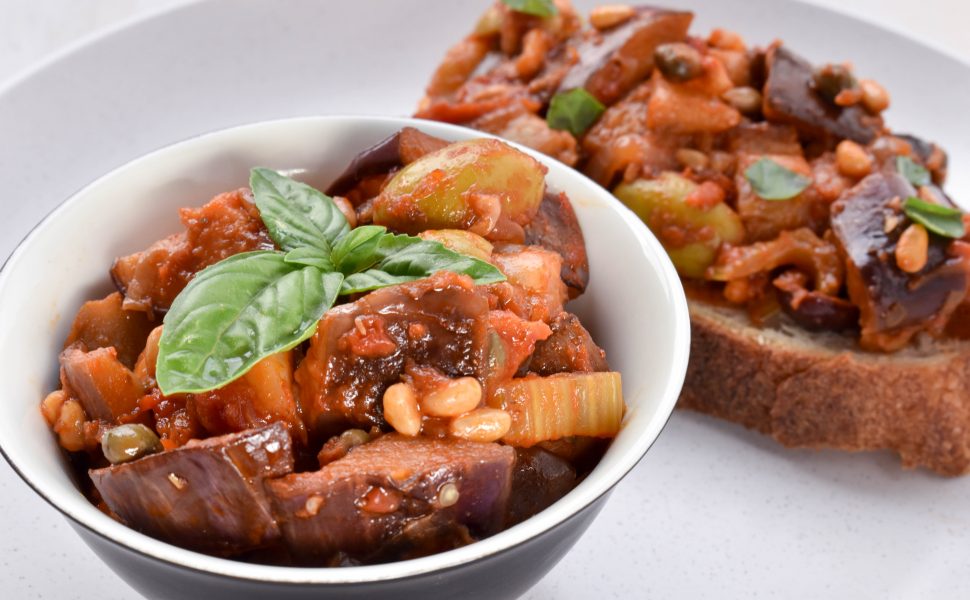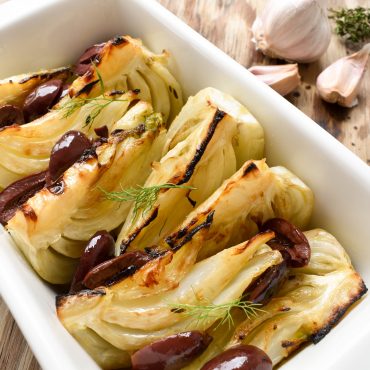Caponata
- 650g eggplant (aubergine) – see note
- 2 celery stalks, thinly sliced
- 2 tablespoons extra virgin olive oil
- 1 large red onion, cut into 4, thinly sliced
- 30g salted capers, rinsed, drained, chopped
- 100g mixed green and black olives
- 25g pine nuts
- 300g Italian cannned chopped tomatoes
- 50ml white wine vinegar
- 1 teaspoon sugar
- 4 basil leaves, torn to serve
- Pane di casa or ciabatta bread to serve
- Sunflower oil, for frying
- Sea salt
Chop the eggplant (aubergine) into 2cm cubes. Heat a generous amount of sunflower oil in a large frying pan over medium heat. Fry the eggplant, in batches, until golden brown (approximately 8-10 minutes). Season the eggplant with salt and transfer to a plate lined with paper towel. Add more oil where required during cooking and repeat with the remaining eggplant.
Place the celery in a small saucepan with boiling water. Cook, uncovered for 3-4 minutes or until tender. Drain the celery.
Heat the olive oil in a large frying pan (or stockpot) over low heat. Add the red onion and cook, stirring occasionally, for 10 minutes. Add the cooked celery, capers, olives and pine nuts. Add the eggplant to the frying pan (or stockpot) and cook for 5-8 minutes, stirring constantly.
Add the chopped tomatoes and cook for 20 minutes over low heat, stirring occasionally. Add water to the caponata, as needed to keep it lovely and moist.
Add the white wine vinegar and sugar to the caponata, then simmer gently, stirring occasionally, for a few minutes or until the vegetables are tender and the caponata is thick and a stew-like consistency. Remove from the heat and allow to cool.
Serve caponata warm or at room temperature with pane di casa or ciabatta bread. Scatter torn basil leaves on top – buon appetito.
Note: In Italy, there are excellent varieties of melanzane (eggplant/aubergine) that are rounded and a vibrant purple colour such as ‘Rosa Bianca’, ‘Violetta di Firenze’, ‘Bianca Sfumata di Rosa’, and ‘Prosperosa’. These varieties have a more delicate flavour and are not bitter. In Australia, I choose Graffiti eggplant (also known as Sicilian eggplant) – they are less seedy and also not bitter. The Italian varieties above and Graffiti eggplant do not need to be salted and rinsed before cooking.
If you are using a black-skinned eggplant, however, you will need to salt the eggplant. To do this, slice the eggplant as per step 1, sprinkle both sides of the eggplant slices with salt and layer in a colander. Set aside for 20 minutes to maximum of 1 hour. Rinse under cold water, drain and use paper towel to pat dry.



